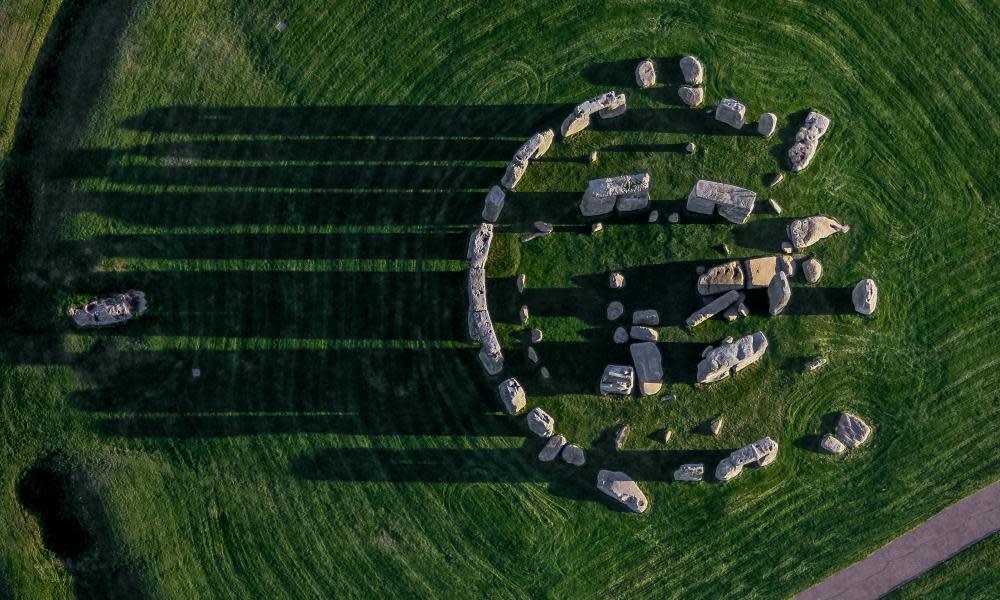Party like it’s 2500BC: Stonehenge building secrets unearthed

The process of building Stonehenge – and having a party at the same time – may have been more important than the finished monument, English Heritage has said.
Experts believe that choosing the stones, moving them and setting them up on Salisbury Plain, may have been a way of bringing people together to socialise and celebrate.
Over this weekend visitors, people who live close to the monument in Wiltshire and schoolchildren are being invited to try to move and set up a four-tonne stone similar in size and shape to the sarsen lintels at the famous stone circle.
The idea is not to puzzle out in a scientific way engineering aspects of moving and setting up the stones, but to bring people together to enjoy a communal experience.
English Heritage’s senior historian, Susan Greaney, said: “In contemporary western culture, we are always striving to make things as easy and quick as possible, but we believe that for the builders of Stonehenge this may not have been the case.
“Drawing a large number of people from far and wide to take part in the process of building was potentially a powerful tool in demonstrating the strength of the community to outsiders.
“Being able to welcome and reward these people who had travelled far, perhaps as a kind of pilgrimage, with ceremonial feasts, could be a further expression of the power and position of the community.”
Research showcased at Stonehenge reveals that prehistoric people brought animals to the site from as far afield as north-east Scotland, more than 500 miles away, to take part in lavish midwinter feasts.
Scientists examined some of the 38,000 bones and teeth (90% of them pig; 10% cattle) discovered at the site of a neolithic village called Durrington Walls, which lies about a mile and a half north-east of the main stone ring.
Durrington Walls was only settled for between 50 and 100 years but it is believed to have housed the circle’s builders and the first visitors after the sarsen stones were put in place.
Experts examined elements including strontium in the pig teeth found at Durrington Walls. Because isotopes of strontium differ chemically according to the geology of the place where the young animal fed, it is possible to discover where individual creatures came from.
They concluded cows and pigs were herded hundreds of miles along ancient byways and may even have been brought by boat to southern England. It suggested that in 2500BC Stonehenge was known across Britain as a place of pilgrimage and celebration.
Stonehenge experts have also been studying evidence from societies who more recently have practised moving huge stones – such as communities on the islands of Sumba and Nias in Indonesia, and in north-eastern parts of India.
Greaney said: “There are amazing photos from societies in Indonesia and parts of India within the last 100 years or so of people practising stone moving and raising. They show people in ceremonial dress, amazing feasts happening, hundreds of people coming together and having a good time.
“As soon as you abandon modern preconceptions that assume neolithic people would have sought the most efficient way of building Stonehenge, questions like why the bluestones were brought from so far away – the Preseli Hills of south Wales – don’t seem quite so perplexing.”
Over the weekend groups of about 40 people will use rollers and ropes to move a hunk of limestone (prosaically brought from a local quarry on the back of a lorry) before helping to erect it into a pre-dug hole. Visitors can simply turn up and join in.

 Yahoo News
Yahoo News 
